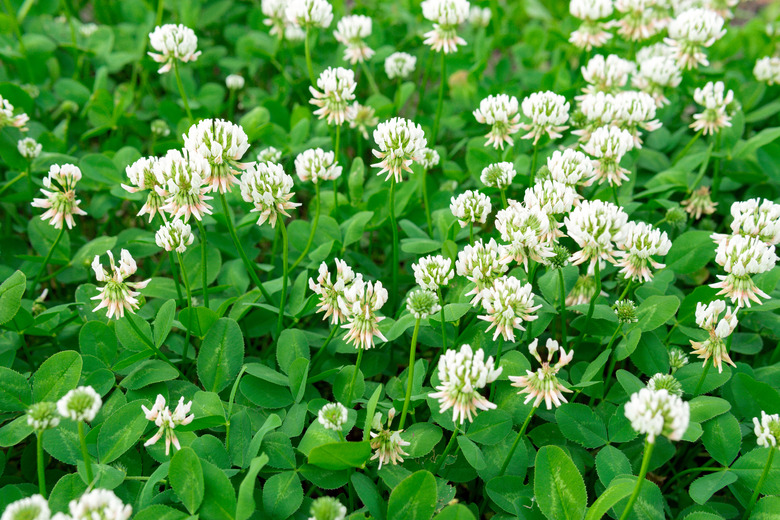What Effect Does A Limiting Nutrient Have On An Ecosystem?
In biology, the definition of a limiting nutrient is that which limits the potential for growth and reproduction in an organism or population. Within an ecosystem, plants, animals and other living organisms require certain nutrients to grow and reproduce. If any of these nutrients are not sufficiently available to meet the needs of an organism or population, then growth will be reduced from its full potential. Organisms may exhibit stunted growth and produce fewer or no offspring. Limiting nutrients have a significant effect in determining the nature of an ecosystem and its processes.
What Are Limiting Nutrients for Plant Growth?
What Are Limiting Nutrients for Plant Growth?
All plants require 17 elements throughout their life cycle, and any of these can be limiting nutrients for plant growth if they are not available in sufficient quantities. The three most important elements are nitrogen (N), phosphorus (P) and potassium (K). These elements are known as macronutrients and plants require large quantities of these elements in order to grow. Modern fertilizers aim to increase their availability in the soil to boost crop production.
Micronutrients are elements that plants require in tiny but essential quantities. These include iron (Fe), boron (Br) and manganese (Mn). These elements can be limiting factors when they are scarce in the environment and there are plentiful amounts of macronutrients to fuel growth.
How Are Nutrients Limited?
How Are Nutrients Limited?
Nutrients may be limited by a natural scarcity of the nutrient in the environment. Soils may lack a certain mineral if that substance wasn't present in the original parent rock from which it was formed. Well-drained soils such as sands may be easily leached of nutrients, especially in areas with high rainfall.
Nutrients can also be limited by availability. The required element may be present within the soil profile but not be in a form that plants are able to uptake. Soil microorganisms such as fungi and bacteria play a critical role in decomposing organic matter into useable nutrients.
Bacteria also work in symbiosis with plants from the pea family (Fabaceae), living within root nodules, fixing and converting atmospheric nitrogen in the soil into ammonia compounds that can be used by bacteria and plants alike.
Nutrients in Aquatic Ecosystems
Nutrients in Aquatic Ecosystems
Aquatic systems such as lakes, rivers and oceans are regulated by the availability of phosphorus and nitrogen. Generally, phosphorous is the limiting nutrient in freshwater systems and nitrogen in marine systems. When nutrient availability rises, it can fuel the growth of extensive algal blooms. This leads to anoxic (oxygen-poor) environments that cause massive die-offs of marine organisms and the creation of 'dead zones' where few creatures can survive.
Some algae can also release toxins into the water that can be harmful to humans and animals. The majority of excess nitrogen and phosphorus comes from fertilizers that enter the waterways as agricultural runoff, and from human and animal waste effluent.
Nutrients in Terrestrial Ecosystems
Nutrients in Terrestrial Ecosystems
Terrestrial ecosystems are likely to be limited by nutrients in areas with high rainfall, such as wet tropical rainforest, as the rain leaches phosphorus and other nutrients from the soil profile. Nutrients are also limited in waterlogged soils, as nutrients are tied up in organic matter due to low rates of decomposition. Clay soils form bonds with soil nutrients, locking them in place and making them unavailable to plants.
Limiting Nutrients for Animals
Limiting Nutrients for Animals
Animals are less likely to suffer from nutrient limitations as they are able to search for the nutrition they need within their environment. However, animals may be affected if they are unable to gain the nutrients they require from their food. Nutrient availability can be limited by both the quantity and quality of food.
For instance, if a grass is growing in soils that lack copper (Cu), then a sheep eating only this grass may become deficient in copper over time, even with unlimited grass. Conversely, if there is a drought, the remaining grass may be high in nutrients, but there is not enough grass available to supply the minimum requirements.
References
- The Nature Education Knowledge Project: Plant-Soil Interactions: Nutrient Uptake
- The Nature Education Knowledge Project: Soil Minerals and Plant Nutrition
- Climate and Global Dynamics: Fundamentals of Nutrient Limitation: Consilience of Plant Ecophysiology and Ecosystem Science
- Microbial Research: Bacteria and Fungi Can Contribute to Nutrients Bioavailability and Aggregate Formation in Degraded Soils
- Monitoring of Marine Pollution: Nitrogen and Phosphorus Eutrophication in Marine Ecosystems
Cite This Article
MLA
Michelle, Meg. "What Effect Does A Limiting Nutrient Have On An Ecosystem?" sciencing.com, https://www.sciencing.com/effect-limiting-nutrient-ecosystem-5170836/. 30 September 2021.
APA
Michelle, Meg. (2021, September 30). What Effect Does A Limiting Nutrient Have On An Ecosystem?. sciencing.com. Retrieved from https://www.sciencing.com/effect-limiting-nutrient-ecosystem-5170836/
Chicago
Michelle, Meg. What Effect Does A Limiting Nutrient Have On An Ecosystem? last modified March 24, 2022. https://www.sciencing.com/effect-limiting-nutrient-ecosystem-5170836/
